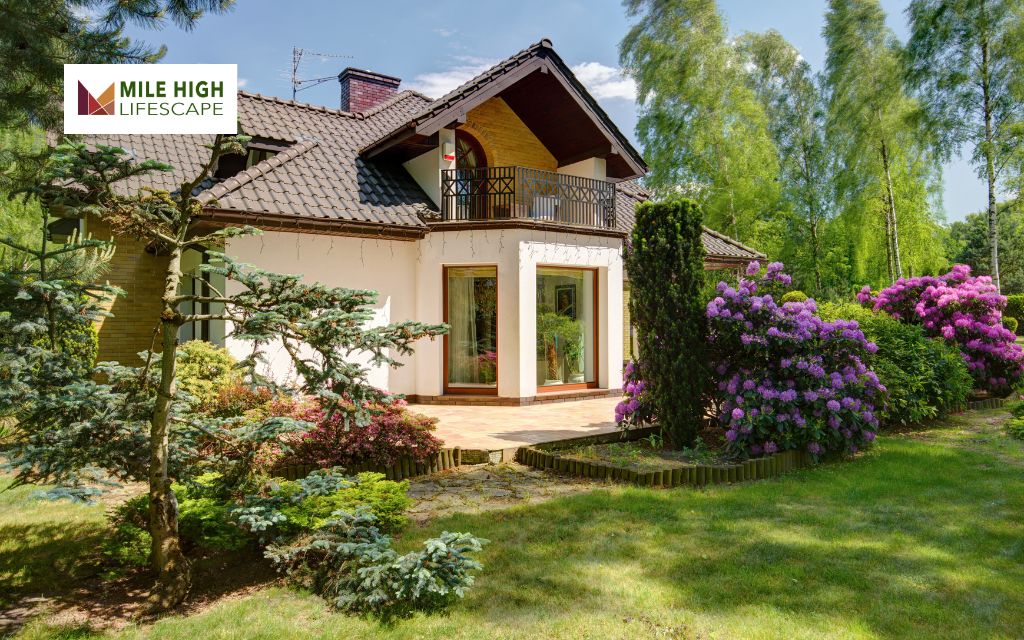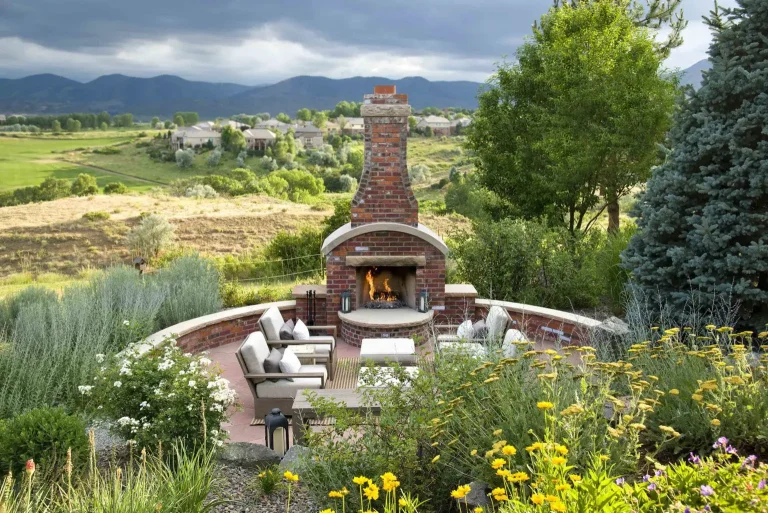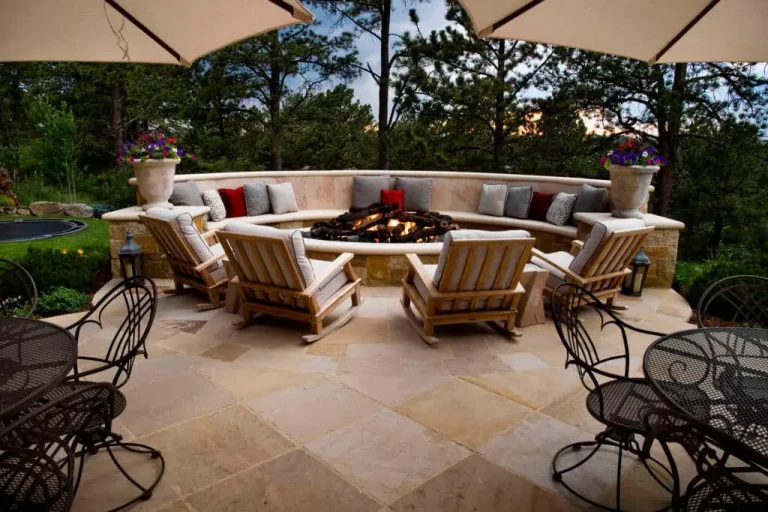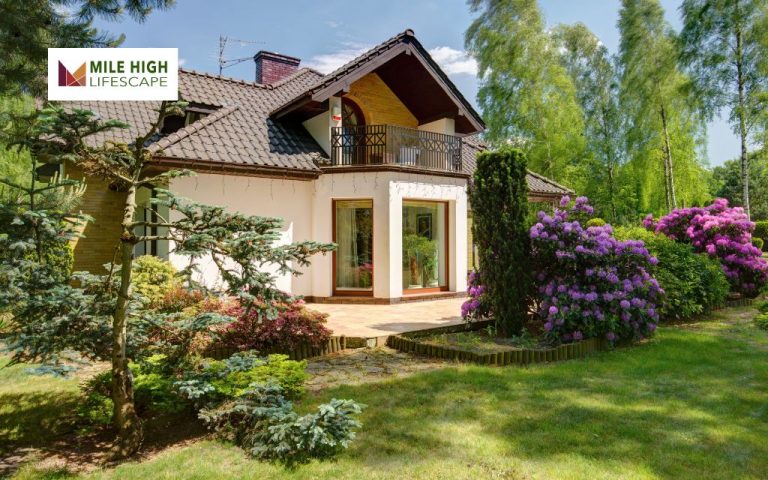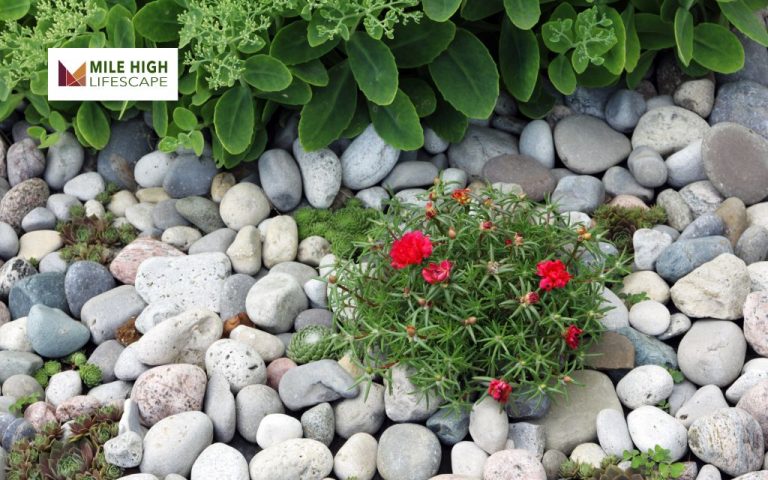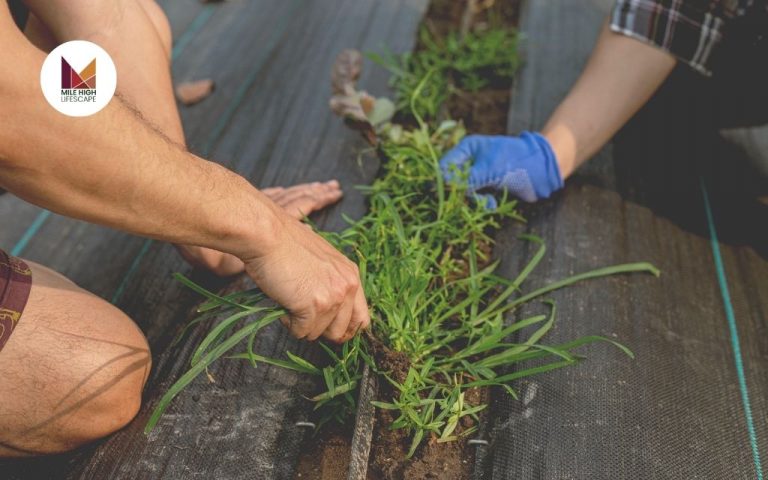A landscape garden is more than just a collection of plants—it’s a thoughtfully designed outdoor space that combines beauty, functionality, and sustainability. As an essential element of modern outdoor living, landscaping transform yards into inviting retreats where aesthetics meet practicality.
Whether it’s a serene oasis for relaxation, a well-designed landscape garden enhances your home’s curb appeal and creates a harmonious connection with nature.
Beyond its visual charm, a landscape garden offers numerous benefits, including improved property value, better use of outdoor areas, and support for sustainable practices like water conservation and native planting. For Denver homeowners, Mile High Lifescape is the trusted landscaping expert in designing and building custom gardens that reflect your style and needs. Ready to turn your outdoor space into a stunning, sustainable retreat? Let’s explore the endless possibilities of landscape gardens!
What Is a Landscape Garden?
Landscape gardening isn’t just for big mansions or parks—it’s a great way to enhance your own garden at home! It’s a way to blend nature with creativity, making your outdoor space both beautiful and relaxing.
You can add trees, water features like fountains or ponds, sculptures, and thoughtful plants to create a stunning atmosphere. Landscape gardening brings together art, nature, and design all in one place. Nowadays, you don’t need a large estate to enjoy it; you can easily create a peaceful and gorgeous garden right in your backyard.
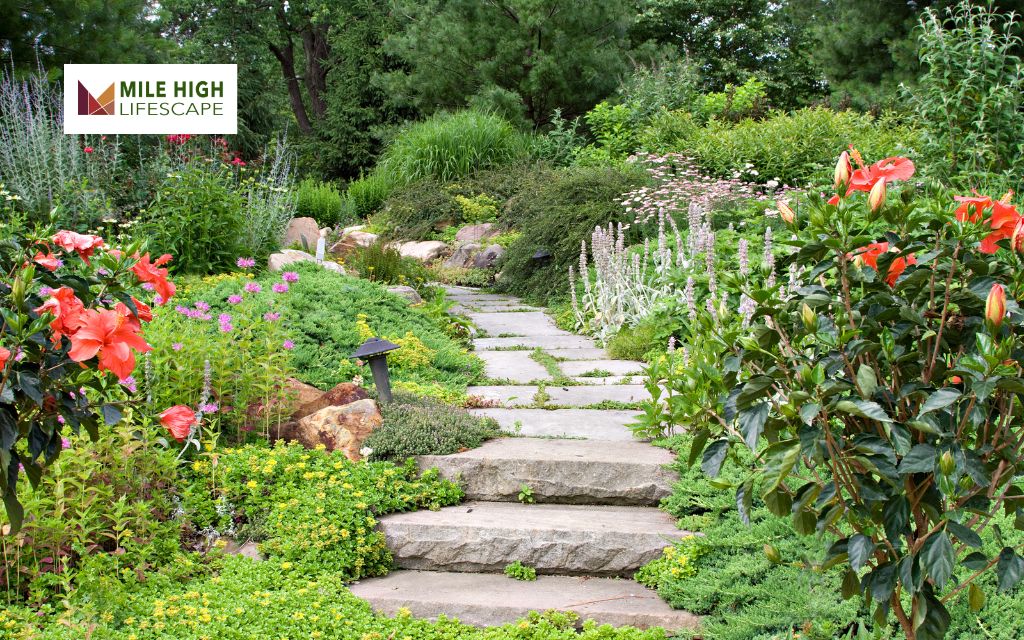
Having a well-designed landscape garden offers many benefits. It gives you a peaceful space to unwind, a beautiful area to entertain guests, and can even raise your home’s value. A beautifully landscaped garden truly makes your home stand out!
Benefits of a Landscape Garden
Make a Great First Impression
Having a well-designed landscape garden is a smart choice for many reasons, and one of the best is that it instantly makes your yard look better. A beautiful garden doesn’t just improve how your home or business looks; it also leaves a positive impression on people passing by. If you’re trying to sell a property, a well-kept garden can make it stand out to potential buyers and make it more appealing.
Increase Property Value
Experts say that a beautifully designed garden can raise a property’s value by up to 20%! Buyers are often willing to pay more for a home with a well-maintained landscape garden. So, if you’re thinking about selling your property, investing in your yard now can pay off big time in the future.
Health Benefits
A landscape garden doesn’t just look good; it’s also good for you. Spending time in a well-maintained garden can help reduce stress and improve mental health by giving you a peaceful place to relax. Plants help clean the air by absorbing toxins and releasing fresh oxygen, making your outdoor space healthier for everyone.
Helping the Environment
Landscaping is a great way to support and protect the environment. By choosing native plants for your landscape garden, you can create a safe home for local animals like bees, birds, and butterflies.
These creatures rely on plants for food and shelter, so creating a balanced garden ecosystem can really help them thrive. Landscaping also helps prevent soil erosion, which keeps the environment safe and healthy for everyone.
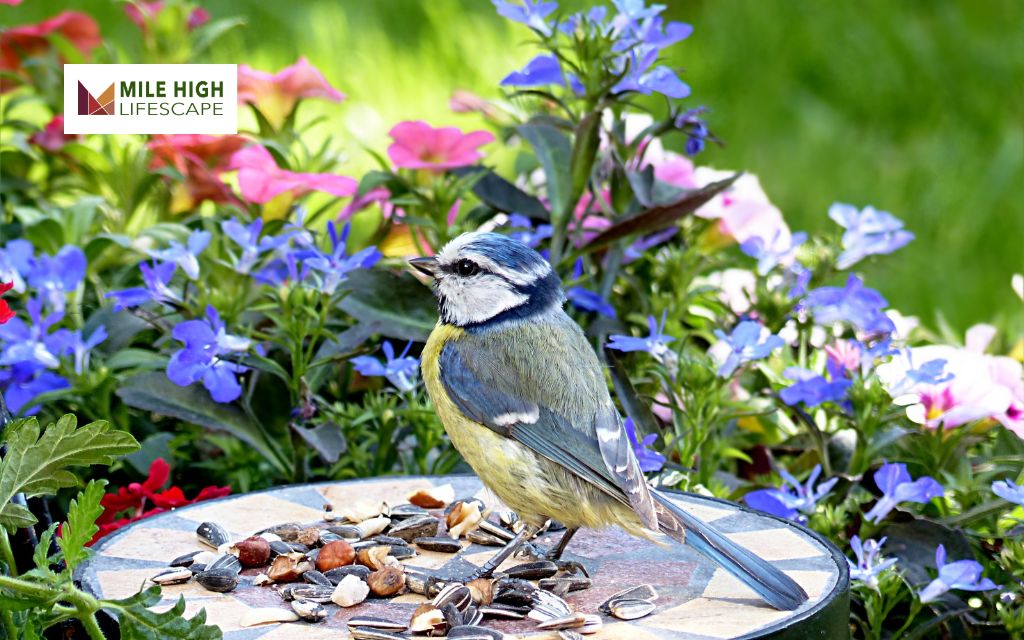
Reducing Pollution
Landscaping can make a big difference in reducing pollution. Plants, like trees and shrubs, work like natural air filters by absorbing carbon dioxide and releasing oxygen. Trees and bushes also help remove pollutants from the air, making it cleaner and healthier.
Plus, a well-designed landscape garden can help block out city noise, reducing the stress of noise pollution and giving you a peaceful outdoor space.
Protecting Plants
Landscaping isn’t just about adding new plants; it’s also about taking care of the ones that are already in your garden. Well-planned landscapes provide protection for plants from things like harsh sunlight and strong winds. By designing your garden with care, you can create the perfect conditions for plants to grow and stay healthy for years to come.
Types of a Landscape Garden
There are different types of landscaping, and the best one for your garden depends on its size and shape. You might want your garden to have a specific theme, like a Mediterranean or oriental style. A landscape gardener can help you plan and create the perfect garden that fits your vision and makes your outdoor space look amazing.
What is Hard Landscaping?
Hard landscaping involves building and installing things like pathways, walls, or even outdoor structures. These projects usually need special tools and skills, like construction or woodworking.
To help you remember what’s hard landscaping, just think about the materials used. Hard landscaping uses solid materials like wood, stone, or brick to create sturdy structures in your garden.
What is Soft Landscaping?
Soft landscaping, like hard landscaping, gets its name from the materials used. While hard landscaping focuses on things like stone and wood, soft landscaping is all about plants, flowers, and grass.
Soft landscaping is important because it adds the beautiful finishing touches to your garden that make it unique. To do a great job, you need to know a lot about plants and nature. This is because picking the right plants to match your garden design is key to making the space come alive.
Combination of Hard and Soft Landscaping
Creating balance between the hard and soft elements in your landscape garden is key to making the space feel welcoming. If you use too many hard materials like stone and concrete, the space might feel too stiff or commercial.
On the other hand, if there are too many plants and flowers, it might look messy. Both hardscapes (like paths or walls) and softscapes (like plants and grass) need to work together. The hard features make it easier to enjoy the plants, while the plants make the hard structures feel softer and more inviting.
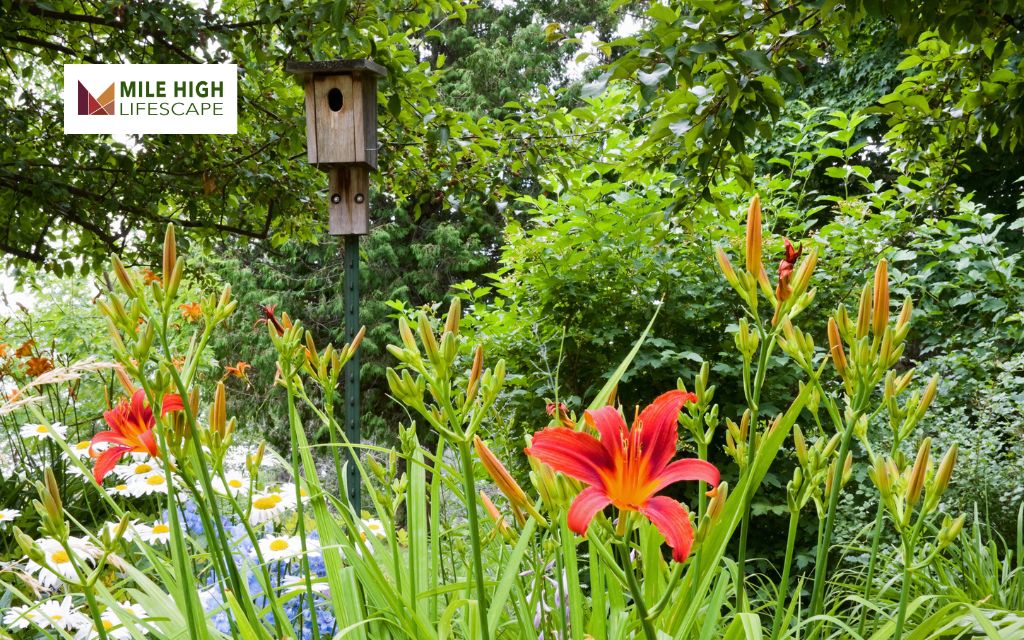
When planning, start with the hardscapes and then add the plants. Place plants around the edges to make the space look softer. Be sure to think about how the plants will grow over time to make sure they fit where you put them.
To make your garden even better, you can add extra touches like outdoor lighting and water features. Lighting not only makes your garden look beautiful at night, but it also adds safety and highlights the features in your space. Water features can attract wildlife and give your garden a peaceful, relaxing vibe.
Designing a Landscape Garden: Helpful Tips to Create
Understand What You Need and Want for Your Landscape Garden
Start by making a list of what you really need and what you’d like to have in your landscape garden. Do your kids need a place to play? Would you like a vegetable garden? Maybe your family would love a patio with a fire pit for cozy gatherings. It’s helpful to sketch your yard and think about where each feature could go. This will help you organize your ideas and create a plan for your landscape garden.
Consider the Best Locations
Before you start placing things in your garden, take some time to observe where the sun and wind come from. For example, if you put a patio on the west side of the house, it might get too hot in the afternoon, especially in summer. Similarly, placing a fire pit where the wind blows hard can make it hard to enjoy.
These are common mistakes to avoid when designing your landscape garden. Pay attention to how the sun and wind move around your yard, and try to choose spots that are comfortable throughout the day. Also, find out your Hardiness Zone and check your soil before planting.
Spend Time Enjoying Your Garden
Don’t rush into making decisions about your yard. Spend some time living with it first, and you’ll notice spots where you’d love to relax that you didn’t think of at first. Choose patio furniture and garden accessories that can easily be moved around and work well in different spots. This flexibility will help you create a landscape garden that you can enjoy all year long.
Start Small
It might seem like outdoor makeovers happen quickly on TV, but they usually have a big team of experts doing all the work. For most beginner gardeners, it’s best to take your time and enjoy the process. Instead of rushing, develop your landscape garden slowly so you can appreciate each step and make thoughtful decisions.
Find a Focal Point
Every great garden has something that stands out, called a focal point. It could be a beautiful tree, a cool sculpture, or a group of interesting shrubs. Be creative—use items you already have for a relaxed look, or keep things simple and modern with clean lines.
If your yard is flat and square, try traditional designs. If your yard has more curves or space, consider adding fun touches like a small pond, a fairy garden, or a flower bed in the shape of an island.
Focus on Scale and Pacing
This part can be tricky, but it’s important for making your garden feel balanced. Scale and pacing mean you arrange plants and features so that they fit together nicely. For example, taller plants look great at the back of a garden bed or against a building, and paths should lead people through the space in a way that feels natural. Mixing different sizes, shapes, and colors will help everything come together in a beautiful way.
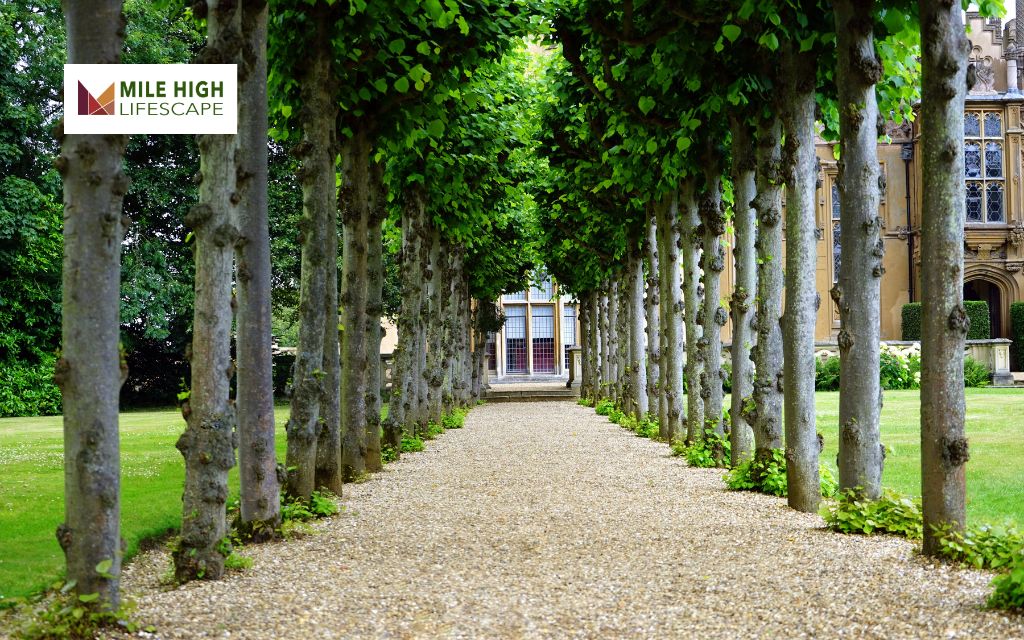
FAQs about Landscape Garden
What is meant by landscape garden?
A landscape garden is an outdoor space that is carefully planned and designed to look beautiful and be useful. It combines natural things like plants, trees, and flowers with man-made features like paths, water fountains, and seating areas. The goal is to create a place where everything works well together, making it both pretty and functional.
How to make a garden landscape?
Creating a landscape garden involves a few simple steps:
- Assessment: Start by checking the conditions of the area, like the type of soil, how much sunlight it gets, and what plants are already there.
- Planning: Draw a design to decide where things like plants, paths, and garden features will go.
- Preparation: Clear the space and fix the soil if needed. Set up the basic parts of your garden like pathways and garden beds.
- Planting: Add your plants in the right spots based on how much sun they need and how much space they require to grow.
- Maintenance: Take care of your garden by watering, weeding, and checking that everything stays healthy over time.
What is an example of a landscape?
An example of a landscape garden could be a backyard that’s turned into a peaceful retreat. It might have colorful flowers, a stone path leading to a cozy seating area, and a small pond with a waterfall. The mix of plants and features comes together to create a calm and inviting outdoor space.
Conclusion
A landscape garden is your gateway to a stunning, personalized outdoor space. It’s more than just plants—it’s about blending nature with thoughtful design to create a yard you’ll love. Whether you dream of a serene oasis or a lively entertaining area, the right plan can make it happen.
With Mile High Lifescape’s expertise in crafting beautiful, sustainable gardens, you can elevate your home’s curb appeal, enjoy nature’s benefits, and make lasting memories outdoors. Ready to transform your yard into a dream landscape garden? Start today and enjoy the beauty and relaxation of your own retreat!
